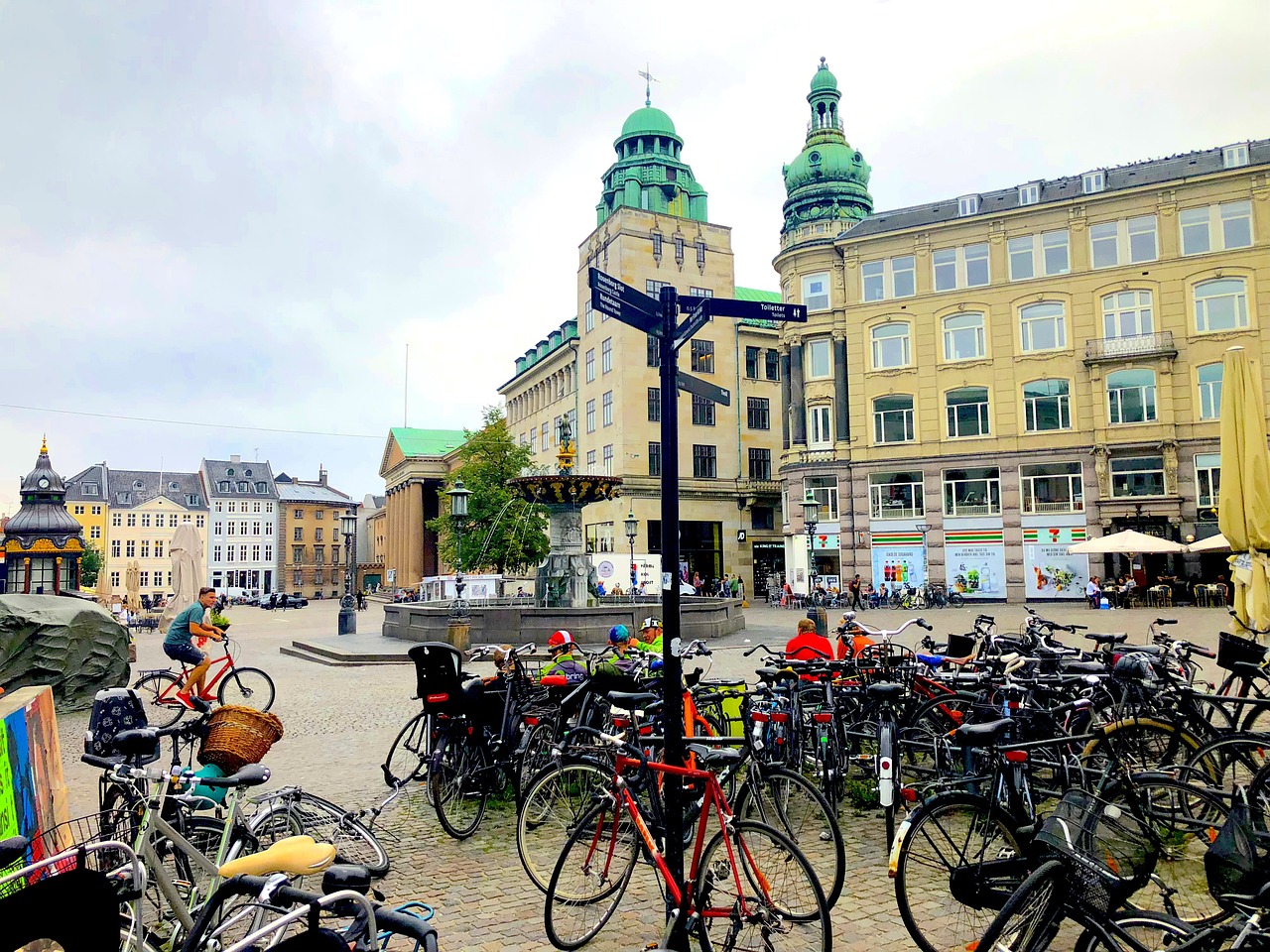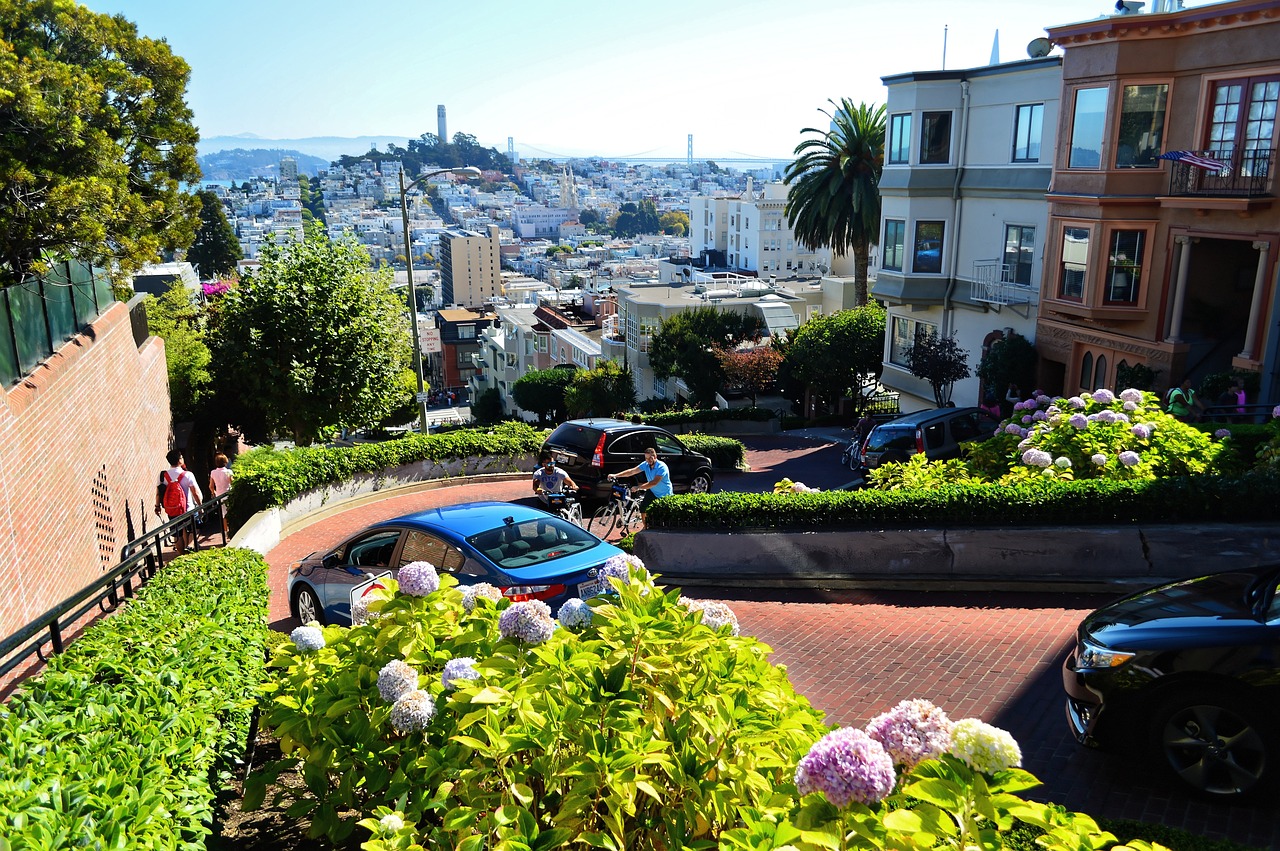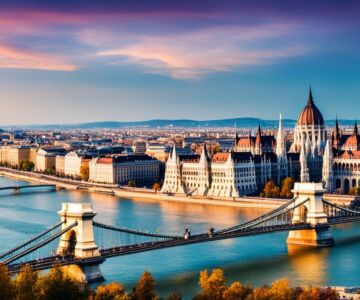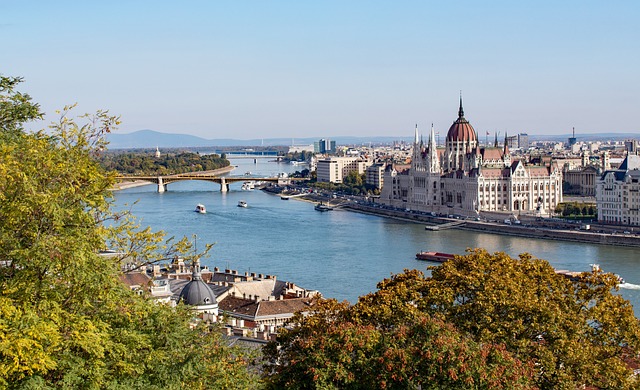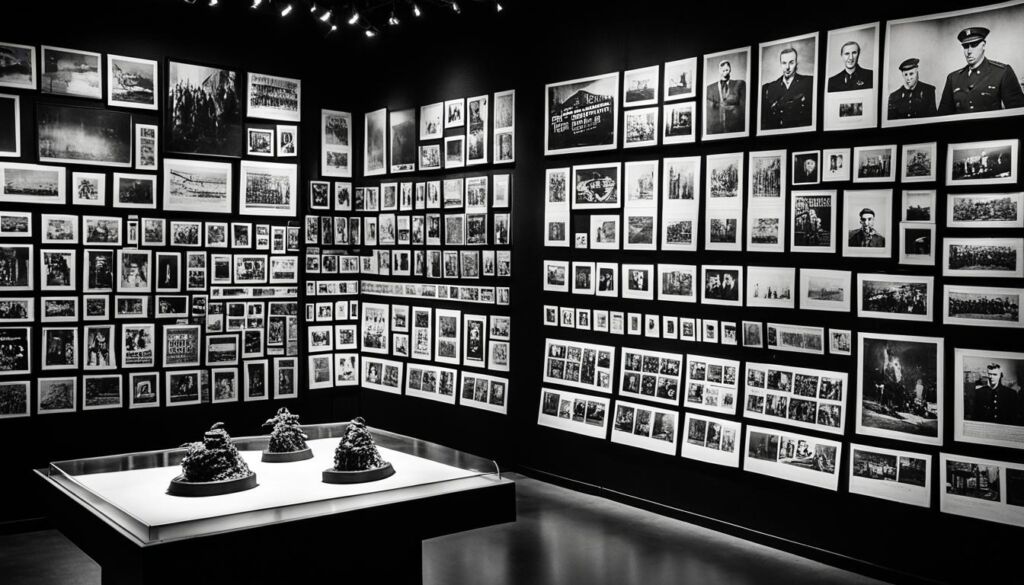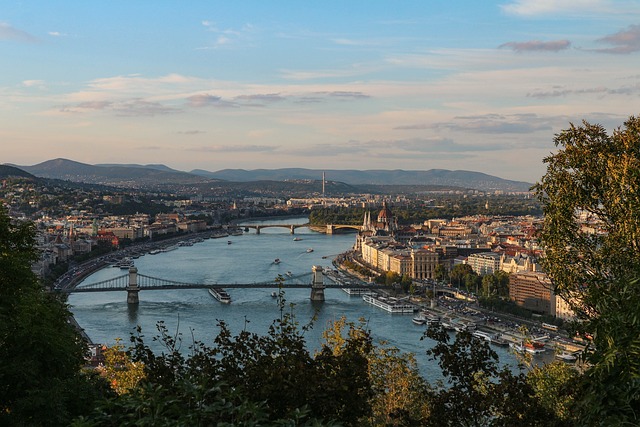Countries often change their names. This is called country rebranding. It shows big changes in history, politics, and culture. For many countries, renaming is a way to show their new identity or their rich history. For example, the Democratic Republic of Congo became Zaire in 1965. Burma changed to Myanmar in 1989. Swaziland became Eswatini and Macedonia changed to North Macedonia in 2018.
India is unique with two names, India and Bharat. Not everyone accepts new country names. For example, the United States still calls Myanmar by its old name. But, the change from Turkey to Turkiye is liked by many, even the United Nations. This shows how country names can affect how they are seen worldwide.
In the past decade, some big changes happened. Czechia, Eswatini, and North Macedonia made new names. These changes happen for many reasons, like political tensions or to show national pride. It’s all part of the ongoing geopolitical evolution.
Past changes include Persia to Iran and Siam to Thailand. Knowing about these changes helps us understand global history better.
Key Takeaways
- Country name changes often reflect historical, political, and cultural shifts.
- Recent examples include Swaziland to Eswatini and Macedonia to North Macedonia.
- India has two officially recognized names: India and Bharat.
- The United Nations officially recognizes Myanmar, though the United States does not.
- Rebranding efforts like that of Turkey to Turkiye aim to bolster national identity and economic prospects.
Reasons Behind Changing Country Names
Countries change their names for many reasons, including political, cultural, and decolonial causes. Changing a name can show a nation becoming more independent and shaping its identity. This section looks at why countries change their names and how it helps in state reformation.
Political Reasons
Politics is a big reason countries change their names. They might want to break away from an old government or show they’re part of new ideas. Over 70 countries have changed their names for reasons like independence. The UN changed how it writes Turkey to Türkiye in June 2022. This was to align with how Turkish people have known their country since 1923. Such changes can make a country feel more unified.
Cultural Reasons
Reviving culture is another reason for name changes. Countries do this by choosing names that honor their traditions. For example, Burkina Faso became its new name in 1984 to show its native heritage. Changes in how names are written, like in China and South Korea, also help their cultures stand out. These kinds of changes support a country’s sense of unity.
Colonial Independence
Many countries reclaim original names to show independence from their past colonizers. This move helps them affirm their national identity. In Africa, many countries have changed their names since gaining independence. For example, Zaire became the Democratic Republic of the Congo. These changes reflect a global effort to highlight cultural roots over colonial history.
| Former Name | Current Name | Year of Change | Reason |
|---|---|---|---|
| Burma | Myanmar | 1989 | Geopolitical shifts and domestic ethnopolitics |
| Siam | Thailand | 1948 | Removal of exonym |
| Persia | Iran | 1935 | Political transformation |
| Swaziland | Kingdom of eSwatini | 2018 | Cultural revival |
These examples show various reasons for changing country names, highlighting political, cultural, and historical motives. Every name change reflects a nation’s journey to stand out and be seen in the world.
Examples of Countries that Have Changed Their Names
Countries have often changed their names to tell better stories about their people. For example, Turkey wanted to show its true culture, so it changed from being called Turkey to Türkiye. This change shows how important a country’s roots are.
In a similar way, Persia became known as Iran in 1935. This change happened to show Iran’s real, native name, showing pride and history. Although not everyone liked the change, it showed the world Iran’s rich past.
Then there’s the case of Burma becoming Myanmar in 1989. This name change was a big deal. It was done by the country’s leaders at the time. The move was meant to move on from the past and show a new future. But not everyone agreed with it.
All these changes are about more than just names. They show how history, culture, and politics are deeply connected. They also show how countries share themselves with the world.
Turkey to Türkiye
Turkey changed its name to Türkiye as an important step. This change was not just about getting rid of the English way of saying the name. It was about showing the importance of its real name and culture. Türkiye stands for a country proud and sure of its roots.
Persia to Iran
Back in 1935, Persia decided to be called Iran. This was a key moment for the country. It was a way to focus on Iran’s Persian background. Choosing its own name made Iran feel more united and strong in front of the world.
Burma to Myanmar
The change from Burma to Myanmar in 1989 was not easy. It was the choice of the country’s leaders, even though not everyone was happy about it. Some countries, like the US, still prefer to use the old name. This shows renaming a country is not just a simple action. It affects how a country is seen and what others call it.
Changing a country’s name is a big deal. It can mean different things to different people. Some see it as reclaiming a lost past, while others see it as cutting ties with a difficult history. Whether it’s Turkey, Iran, Myanmar, or others, these name changes highlight their efforts to shape how the world looks at them.
| Country | Old Name | New Name | Reason |
|---|---|---|---|
| Turkey | Turkey | Türkiye | Emphasize cultural authenticity |
| Iran | Persia | Iran | Reflect native name, assert national identity |
| Myanmar | Burma | Myanmar | Address colonial past, political rebranding |
The Impact of Name Changes on National Identity
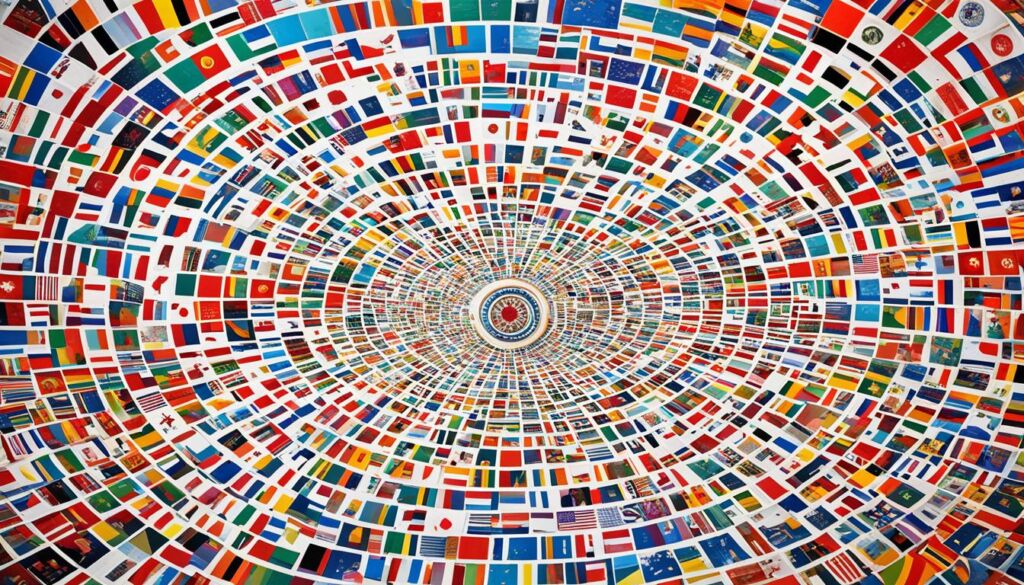
Changing country names deeply affects their culture and identity. It aims at making people proud and showing off what makes a nation unique. For example, changing from Holland to the Netherlands helps draw more tourists by being clearer about its true identity.
Promotion of Cultural Heritage
Changing names is key in showing off a country’s true culture. It lets them tell their story to the world in a better way. For example, changing from the Republic of Macedonia to the North allowed them to highlight their unique history and make peace with others.
This also helps countries work better with others. It fixes old problems and helps them to own their full stories.
International Recognition
Names also make countries more known and respected around the world. A shorter name, like Czechia instead of the Czech Republic, improves how people and other countries see it. This makes it easier to stand out and be noticed warmly by others.
When North Macedonia chose its new name, it helped them join groups like NATO. This shows how a name can really change the path a country takes. It aims to show they are their own masters, makes people prouder, and builds a strong global image.
Countries with Weird Country Names
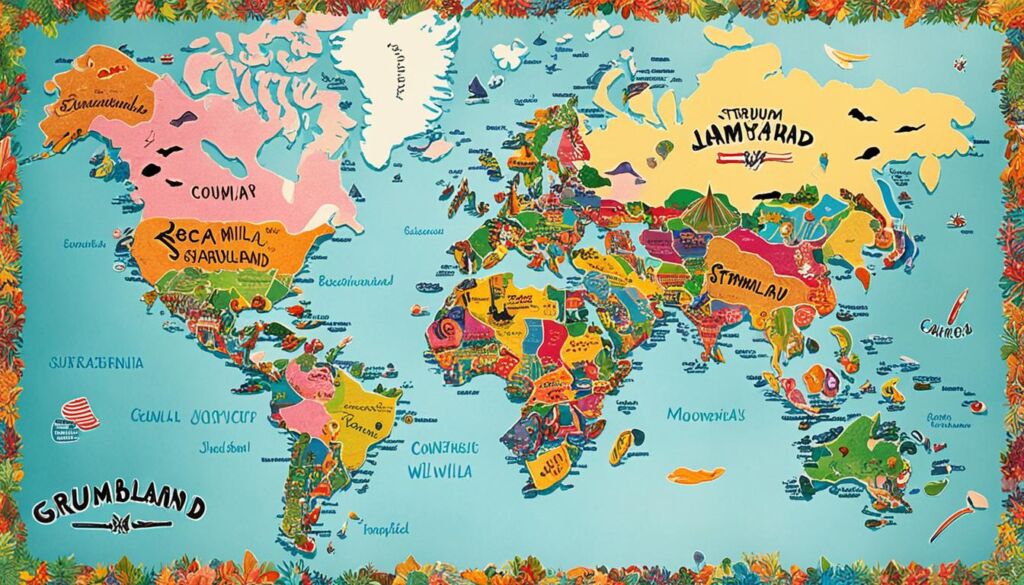
Many countries have odd names that make us curious or smile. For example, *Burkina Faso* used to be known as the Republic of Upper Volta. It changed its name in 1984. *Kyrgyzstan*’s name comes from a Turkish word that means “forty.” It shows a bit about the country’s history or its people.
These strange country names come from many places. They might be from long ago, the way people speak, or from wanting to be different. Learning about these names can teach us about a country’s story and what makes it special. *Panama*’s name means two things, “butterfly” and “rich in fish”. *Belize* tells us it has wet, muddy land.
| Country | Name Origin |
|---|---|
| Kyrgyzstan | Derived from “kirk,” meaning “forty,” indicating a union of clans. |
| Burkina Faso | Changed from the Republic of Upper Volta in 1984. |
| US Virgin Islands | Named after Saint Ursula and the 11,000 virgins. |
| Panama | Means “abundance of butterflies” or “a place rich in fish.” |
| Pakistan | Translates to “land of the pure.” |
| Belize | Means mud-irrigated. |
| Vatican City | Smallest country by land area and population, entirely inside Rome. |
These strange country names mean a lot more than just where a place is. They tell us about the people, their dreams, and stories. A funny or interesting name is not just that. It’s a sign of a nation’s pride and uniqueness in the world.
Conclusion
Many countries have changed their names for different reasons. This shows how important a name is for a country. It affects how the country fits in the world. These changes show that names help countries show who they are and what they want.
Also, a country’s new name can tell a lot about its history and dreams. For example, when Turkey changed to Türkiye and Iran to Persia, they connected to their past. These changes can make countries more known and respected worldwide. They show how a country has grown and its place in the world.
Names keep changing as the world does. This is important for a country’s image and story. With the world being more connected, these name changes tell us about a country’s character and its place in the world. Name changes are a strong way to show a country’s identity and goals.




